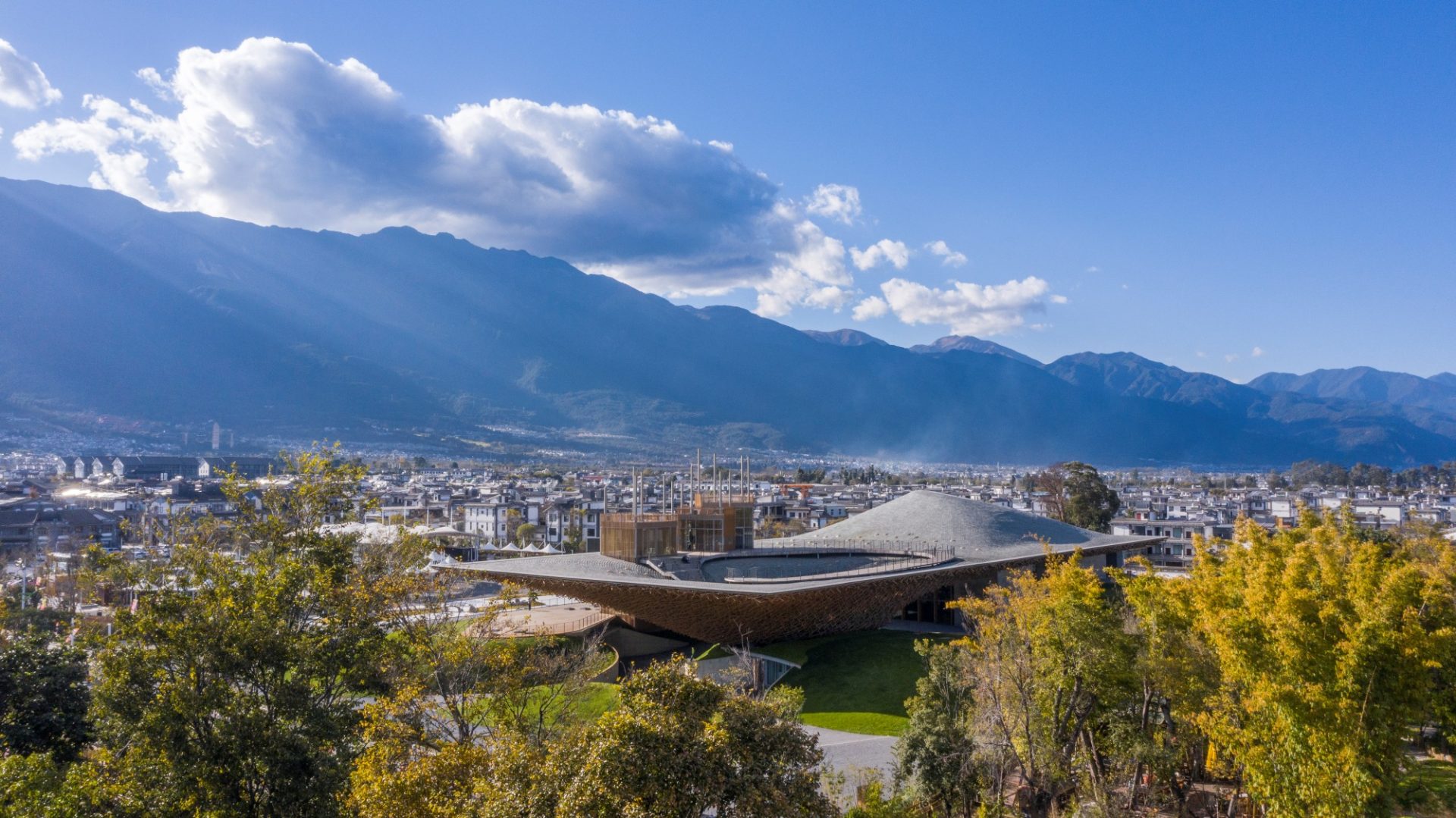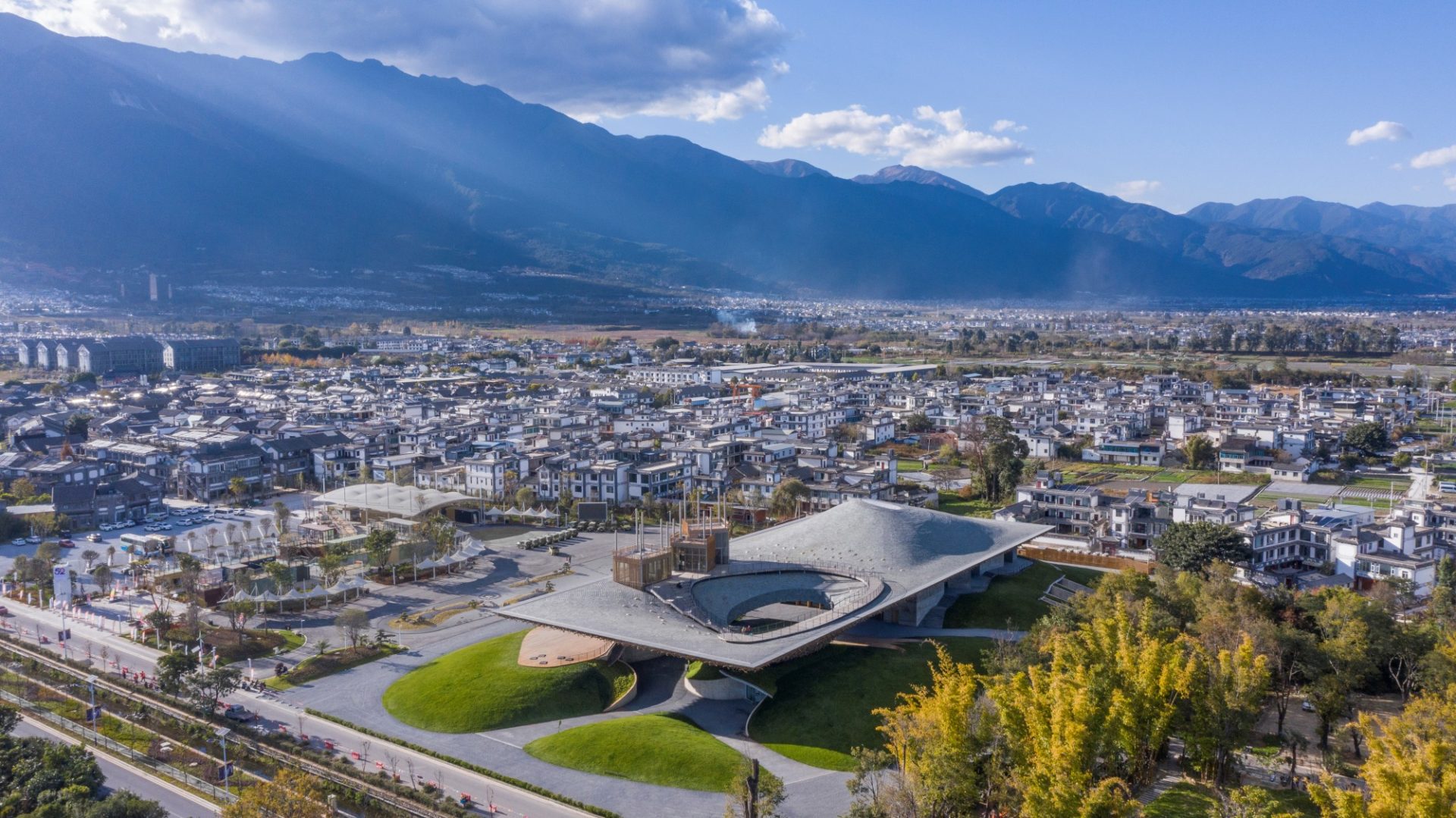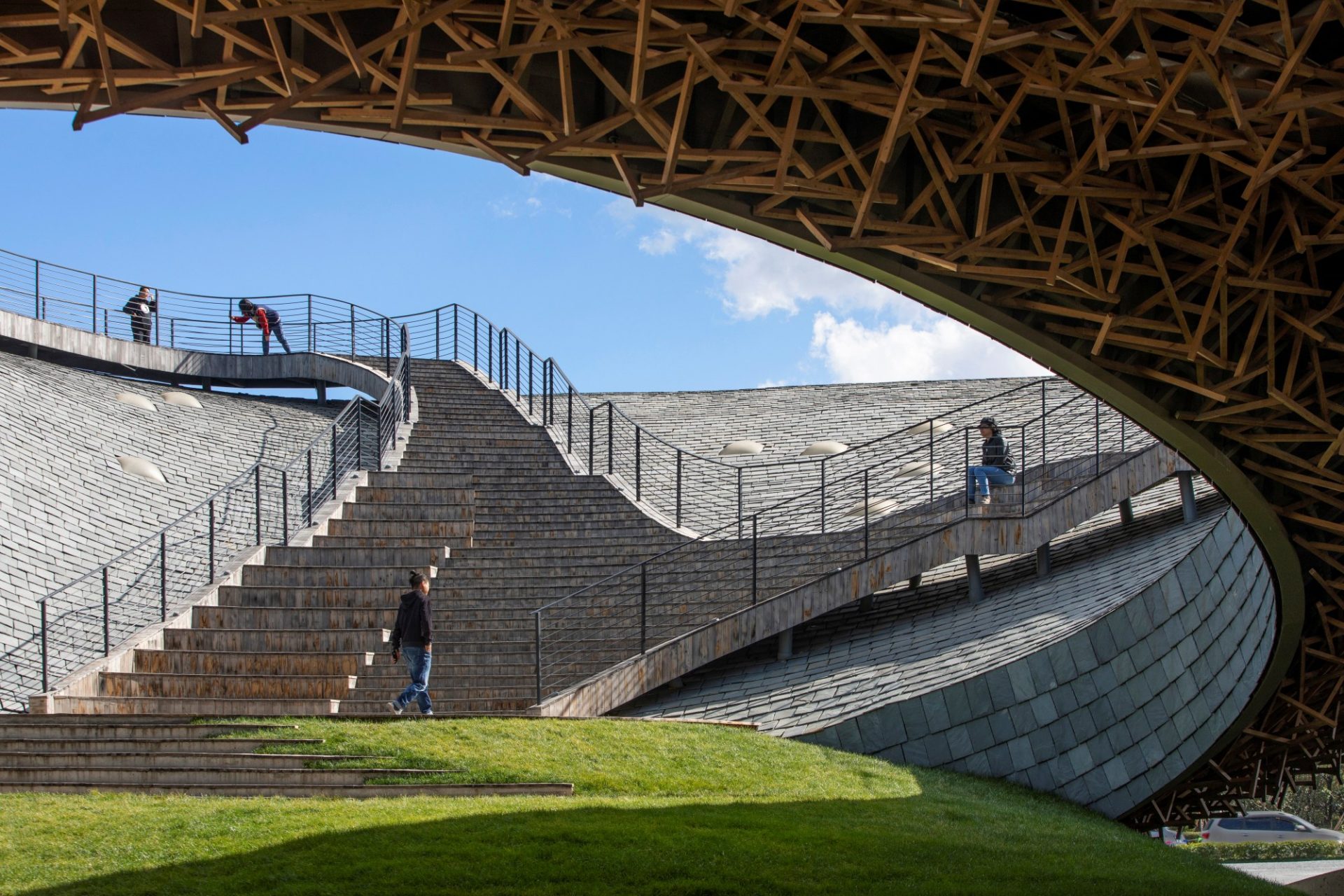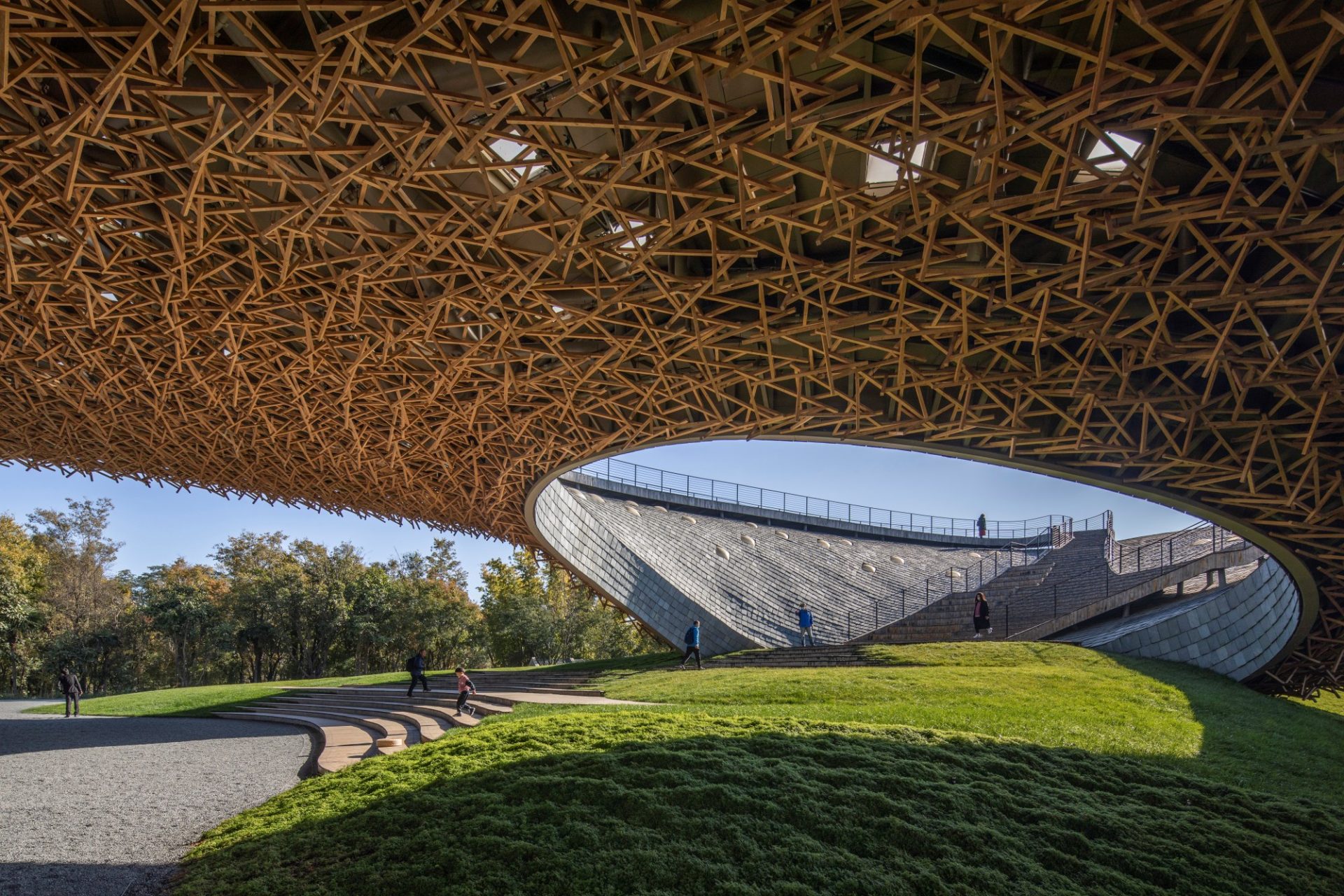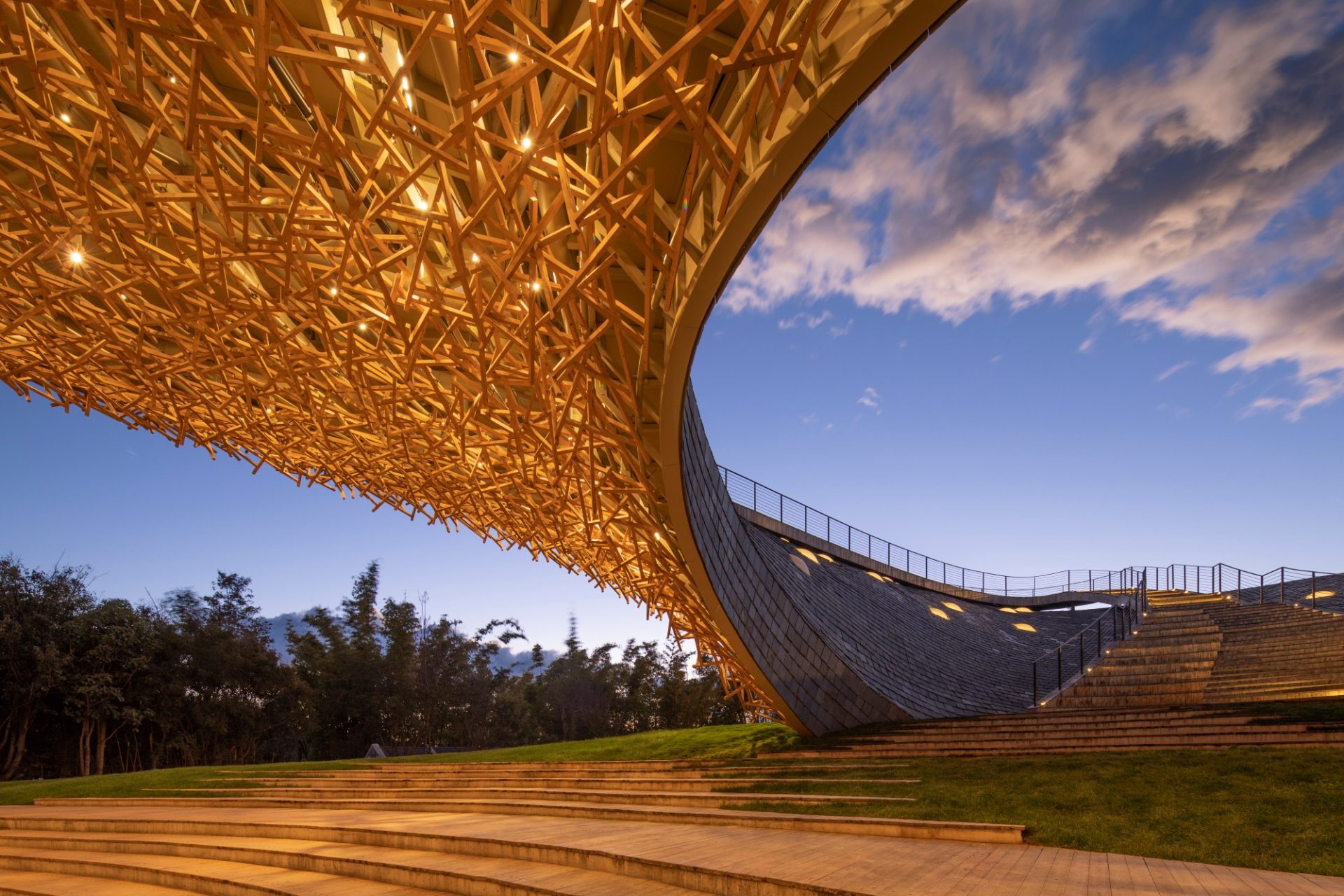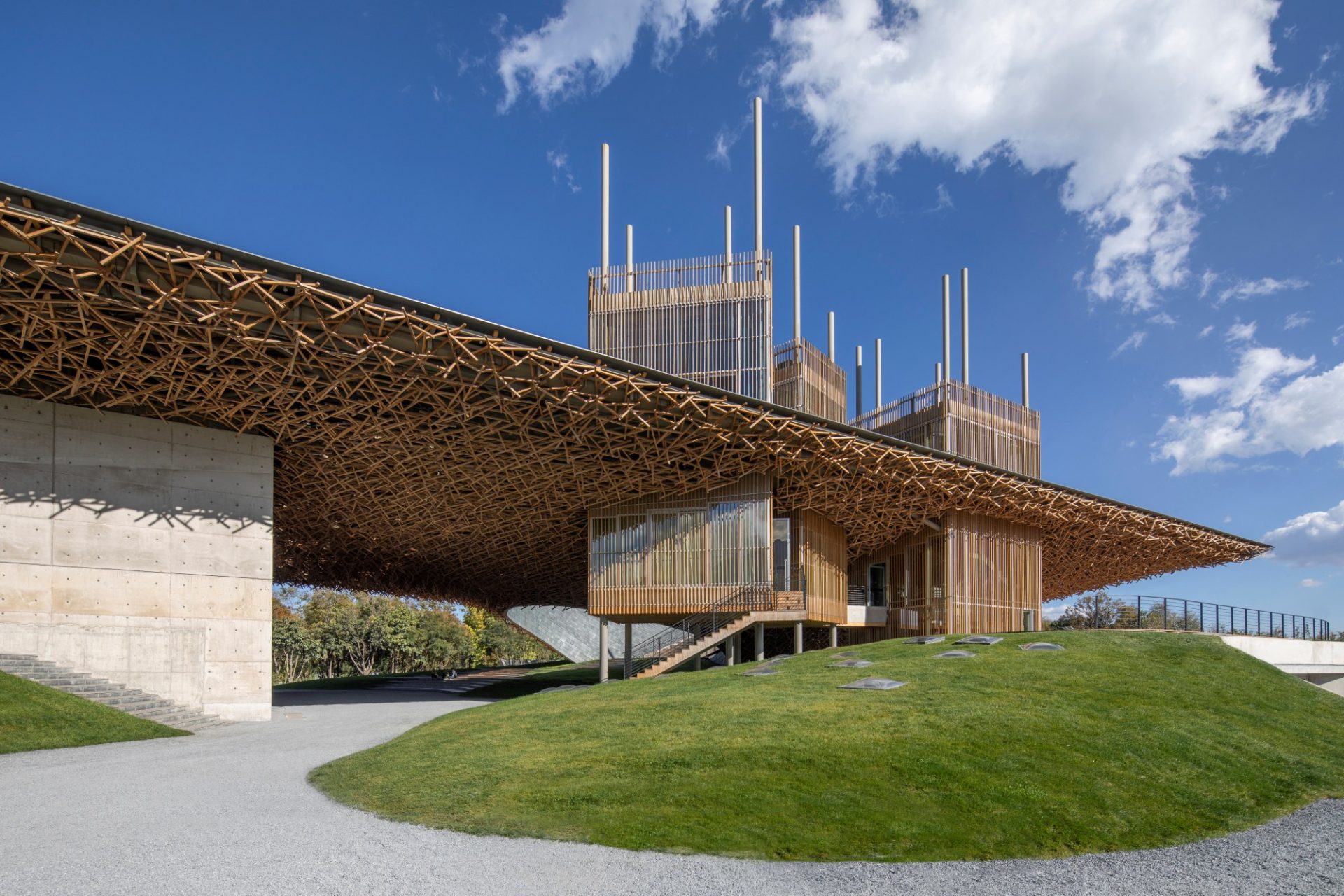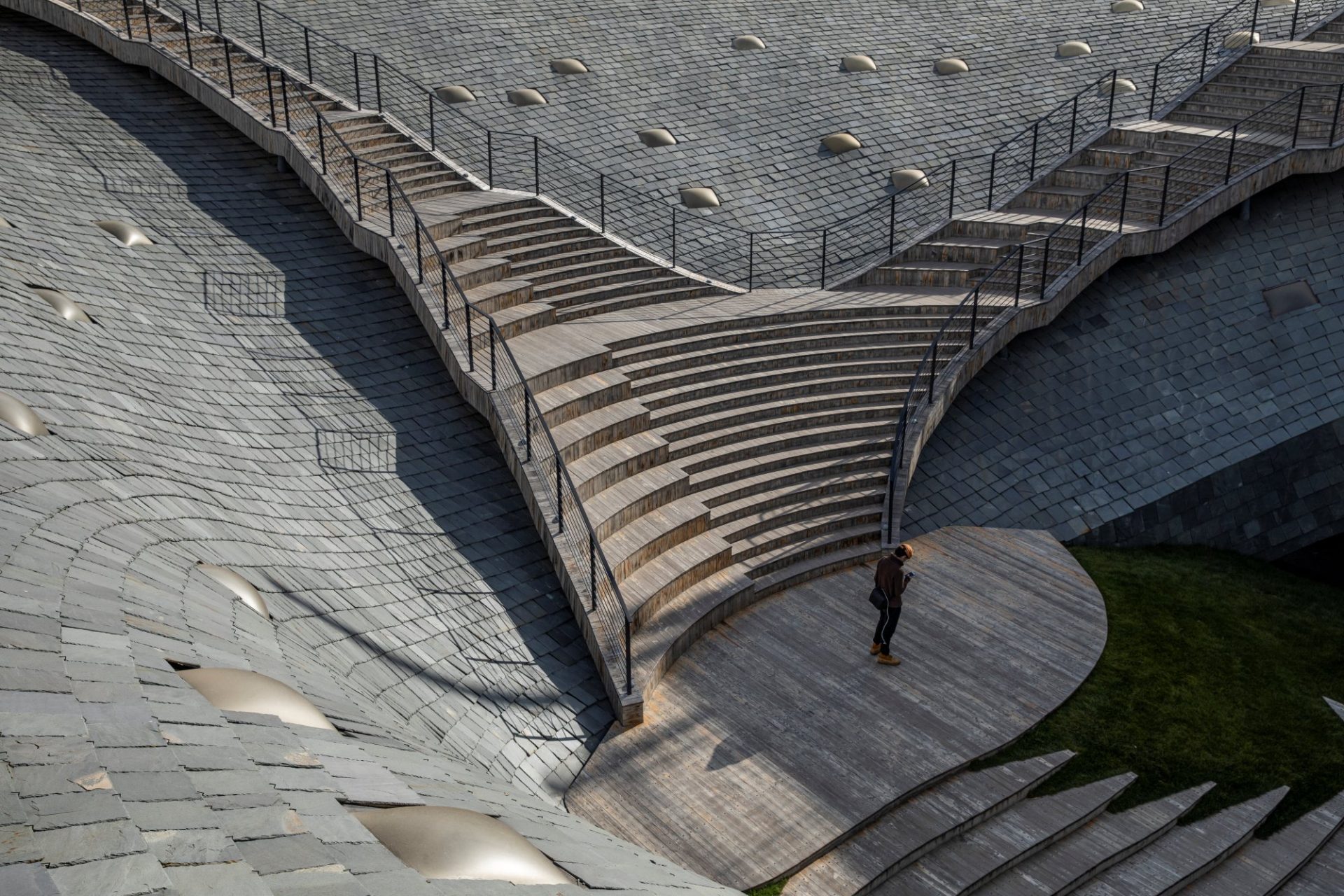The Roof that Defines the Yangliping Performing Art Centre
Designed by Studio Zhu Pei, the Yang Liping Performing Art Centre in Dali, China is seen from afar as a spectacular roof that dips to form a cave, transcends to a platform, and later on curves to create steps for viewing around the facility.
The Yang Liping Performing Arts Centre is a building that is the star performer in that particular site. Designed by Beijing-based Studio Zhu-Pei, a plaza weaves through the Yang Liping Performing Arts Center and intersects with a concrete volume containing the main theatre, allowing its stage to be opened up to the outside.
Outside the main auditorium, a set of steps ascend onto the roof providing casual seating to view performances taking place on the indoor stage or in the plaza. The Yang Liping Performing Art Centre in Dali, China contains a theatre, rehearsal hall and also functions as a multi-functional hall with a café, restaurant, and a design shop, and other offices and back functions.
The arts facility was commissioned by local professional dancer Yang Liping for a site to the northeast of the city’s historic center, where Studio Zhu-Pei has also designed a museum of contemporary art. The slate-covered roof has an organic profile informed by the outline of the surrounding mountains. The structure merges with the partly sunken garden spaces, creating a sense of connection between the ground and the roof. The roof structure is covered on its underside by wooden battens arranged in a nest-like composition. Skylights incorporated into the canopy allow daylight to filter through the wooden structure.
A cluster of treehouse-like towers extends through the canopy, connecting the ground level with a viewing area on the roof. These contain a cafe and a private teahouse.
“As with mountains and valleys, the strong shape of the roof reflects the more organic landscape below and points to the old Chinese principle of yin and yang, where two opposites combine together to form a whole,” the studio explained.
Situated between the Cang mountain chain which reaches 4,000 meters in height, and the 40 kilometers long Lake Erhai, the city of Dali is an important tourism destination. The old town has largely been preserved and still has some remains of the historic city wall with gate towers.
Inspired by the powerful surrounding landscape, Zhu Pei searched for landscape-related references to solve the architectonic challenges for the Performing Arts Center.
“A widely cantilevered rectangular roof spans across a built landscape of free-flowing indoor and outdoor spaces, some of which can be combined as an interacting spatial system. As with mountains and valleys, the strong shape of the roof reflects the more organic landscape below and points to the yin and yang principle where two opposites form a whole together. Formally expressed as organic-shaped hills, the partly sunken spaces become like a natural garden landscape, promising a high experiential quality, which continues into the public theatre inside,” explains the architect.
Photographs and Information Courtesy Studio Zhu-Pei
Photography by @Jin Weiqi


